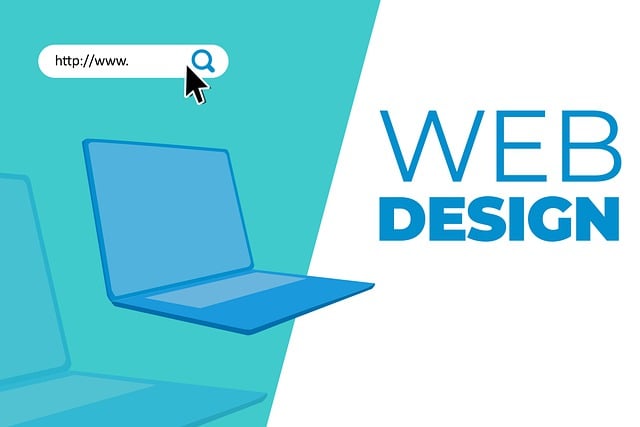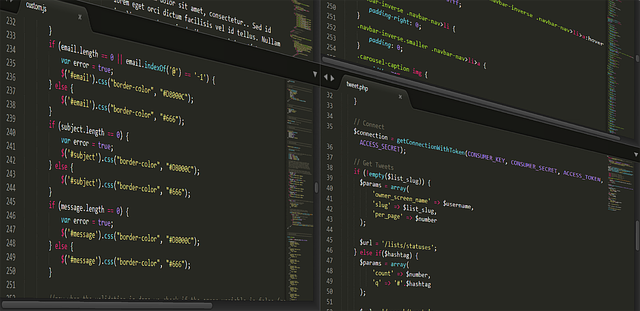In today's digital era, affordable website development is crucial for startups, small businesses, and non-profits to compete online without straining resources. Utilizing open-source platforms, pre-built templates, content management systems (CMS), and cloud hosting reduces costs and time spent on development. Tools like WordPress, Wix, and Squarespace democratize web creation with user-friendly interfaces, while open-source CMSs like Drupal and Joomla offer robust features at lower costs. By balancing affordability with legal protections and effective SEO strategies, businesses can create high-quality websites that drive growth and enhance their online presence without breaking the bank. Future trends in website development include AI-powered builders, enhanced mobile responsiveness, user experience optimization, and sustainable practices. To ensure quality, avoid low initial quotes and prioritize clear communication with developers for specific goals and thorough reviews.
In today’s digital landscape, having a website is no longer an option but a necessity for businesses of all sizes. However, traditional web development can be costly, especially for small enterprises with limited budgets. This article explores affordable website development, offering insights into unlocking digital potential without breaking the bank. We’ll guide you through budget-friendly solutions, cutting-edge tools, and strategies to create high-quality sites economically. From legal considerations to future trends, discover how to navigate this space effectively.
Understanding Affordable Website Development: Unlocking Digital Potential

In today’s digital landscape, a well-crafted website is no longer a luxury but a necessity for businesses and individuals alike. However, the cost of traditional Website Development has often been prohibitive, limiting access to online presence for many. This is where the concept of affordable Website Development comes into play, offering a gateway to unlock digital potential without breaking the bank. It’s about creating functional, visually appealing, and user-friendly websites at prices that are accessible and sustainable for startups, small businesses, and even non-profit organizations.
By embracing cost-effective strategies, from utilizing open-source platforms and pre-built templates to implementing content management systems (CMS) that streamline updates, developers can significantly reduce development time and expenses. Additionally, leveraging the power of cloud hosting provides scalability while keeping costs low. This approach not only makes Website Development more affordable but also ensures businesses can adapt to changing digital demands without overextending their resources.
Defining Budget-Friendly Solutions for Small Businesses

Small businesses often have limited resources, making it a priority to find affordable solutions for their website development needs. Budget-friendly options are essential in today’s digital landscape, where having an online presence is crucial for any business looking to thrive and reach its target audience. By defining “budget-friendly” as cost-effective yet high-quality, developers can create robust and visually appealing websites without breaking the bank.
One way to achieve this is by utilizing open-source tools and platforms that offer a wide range of features and templates suitable for various business types. These resources often provide a solid foundation for building a website, allowing businesses to focus on their unique content and branding rather than expensive customization. Additionally, leveraging cost-effective hosting services and content management systems (CMS) can significantly reduce ongoing maintenance costs, ensuring small businesses get the best value for their investment in website development.
Tools and Platforms Revolutionizing Web Development Costs

The landscape of website development has drastically changed due to emerging tools and platforms that are democratizing access to affordable web creation. Technologies like WordPress, Wix, and Squarespace have revolutionized the industry by offering user-friendly interfaces and customizable templates, enabling non-coders to build professional websites at a fraction of traditional costs. These platforms provide drag-and-drop functionality, making it easy for individuals and businesses with limited technical expertise to design and launch their online presence without the need for extensive coding knowledge.
Furthermore, open-source content management systems (CMS) such as Drupal and Joomla have added to the affordability by offering robust features and a dedicated community that contributes to ongoing development and support. Additionally, pre-built website templates and themes available on various marketplaces allow developers and non-developers alike to expedite the design process, further reducing costs associated with custom development. This trend towards accessibility and affordability in website development is empowering businesses of all sizes to establish an online presence without breaking the bank.
Strategies to Minimize Expenses Without Sacrificing Quality

To keep website development costs low without compromising quality, start by leveraging open-source tools and platforms. These options provide a robust foundation for building websites without the hefty price tag associated with proprietary solutions. WordPress, for instance, offers an extensive library of themes and plugins that cater to various design and functionality needs, all while remaining cost-effective.
Additionally, consider a lean approach to website development by focusing on essential features. Avoid unnecessary bells and whistles that may inflate costs and development time. Prioritize user experience with a clean, intuitive layout and clear call-to-actions. This strategy ensures your website is both aesthetically pleasing and functional while keeping expenses in check.
Case Studies: Success Stories of Cost-Effective Websites

In the competitive digital landscape, affordable website development has emerged as a game-changer for businesses and entrepreneurs. Case studies from various industries reveal successful cost-effective website implementations that have driven growth and enhanced online presence. For instance, consider a small local bakery that launched a user-friendly e-commerce site featuring attractive product photography and seamless checkout options. Despite a limited budget, the website increased sales by 30% within the first three months, attracting customers from beyond the bakery’s immediate neighborhood.
Similarly, a non-profit organization, with a mission to raise awareness about environmental issues, utilized open-source tools and content management systems (CMS) to create an engaging online platform. The result was a dynamic website that showcased initiatives, accepted donations, and fostered community engagement, all while maintaining low development costs. These real-world examples demonstrate that effective website development need not break the bank, offering hope and inspiration for businesses aiming to establish or strengthen their digital footprint on a tight budget.
Legal and SEO Considerations in Low-Cost Website Creation

When creating a website on a tight budget, it’s crucial to understand that legal and SEO considerations shouldn’t be overlooked. Many low-cost website builders offer simplicity and ease of use, but they may not always include essential legal protections or adhere to search engine optimization (SEO) best practices. To ensure your site is legally sound, review terms of service for any hidden costs or restrictions, especially regarding intellectual property rights and data privacy.
For SEO, while cost-effective solutions can provide a solid foundation, investing in keyword research, meta tagging, and content optimization will significantly improve your website’s visibility online. These strategies ensure your site ranks higher on search engine results pages (SERPs), attracting more organic traffic. Remember, even with affordable development options, the right legal and SEO considerations can make or break the success of your online presence.
Future Trends: Making Websites Accessible and Affordable for All

As we move forward into a more digitally connected world, the future of website development lies in making it accessible and affordable for all. This means breaking down barriers that currently exist, such as high costs and complex coding requirements. Emerging technologies like AI-powered website builders are playing a significant role in democratizing web creation by allowing non-technical users to build professional websites with ease.
Further trends include the increasing emphasis on mobile responsiveness and user experience (UX), ensuring that websites adapt seamlessly across different devices and screen sizes. Additionally, there’s a growing trend towards sustainability and eco-friendly practices, where developers are considering the environmental impact of web technologies. These developments aim to make website development not just accessible but also an inclusive and responsible process for businesses of all sizes and backgrounds.
Common Pitfalls to Avoid When Pursuing Inexpensive Web Development

When pursuing affordable website development, it’s important to steer clear of some common pitfalls that can compromise quality and long-term success. Many businesses are drawn to low initial quotes, only to find themselves with a clunky, slow website that doesn’t meet their needs. This often stems from not clearly defining project requirements up front or settling for developers who lack experience or expertise in your industry.
Another trap to avoid is sacrificing essential features and functionality in the name of cost reduction. A poorly coded website can lead to security vulnerabilities, SEO issues, and a frustrating user experience. It’s crucial to find a balance between affordability and quality by prioritizing clear communication with developers, outlining specific goals and expectations, and thoroughly reviewing the final product before launch.
